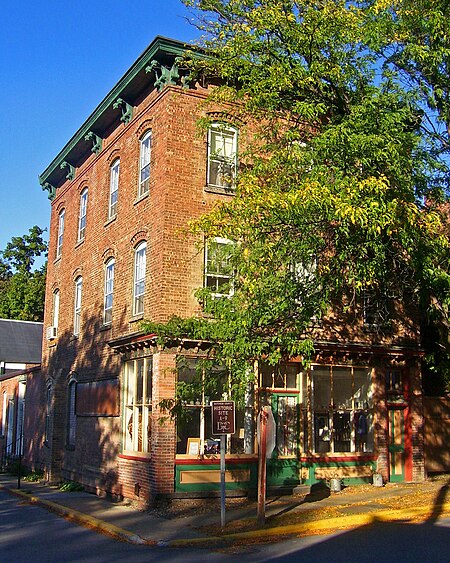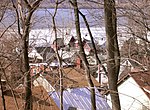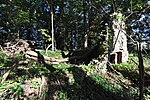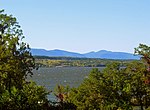O'Brien General Store and Post Office
Buildings and structures in Rhinebeck, New YorkCommercial buildings on the National Register of Historic Places in New York (state)Individually listed contributing properties to historic districts on the National Register in New York (state)Italianate architecture in New York (state)NRHP infobox with nocat ... and 3 more
National Register of Historic Places in Dutchess County, New YorkNew York (state) building and structure stubsPost office buildings on the National Register of Historic Places in New York (state)

The O'Brien General Store and Post Office is a combined store and post office located at Schatzell and Charles streets in the hamlet of Rhinecliff, New York, United States, across from the community's central plaza. It is a two-building Italianate complex built in the late 19th century. The western half houses the store and the eastern the post office, which serves the small 12574 ZIP Code roughly contiguous with the riverside hamlet.It is a contributing property to the Hudson River Historic District, a National Historic Landmark which includes all of the hamlet. The building itself was added to the National Register of Historic Places in 1987.
Excerpt from the Wikipedia article O'Brien General Store and Post Office (License: CC BY-SA 3.0, Authors, Images).O'Brien General Store and Post Office
Shatzell Avenue,
Geographical coordinates (GPS) Address Nearby Places Show on map
Geographical coordinates (GPS)
| Latitude | Longitude |
|---|---|
| N 41.919722222222 ° | E -73.951111111111 ° |
Address
Shatzell Avenue 15
12572
New York, United States
Open on Google Maps










